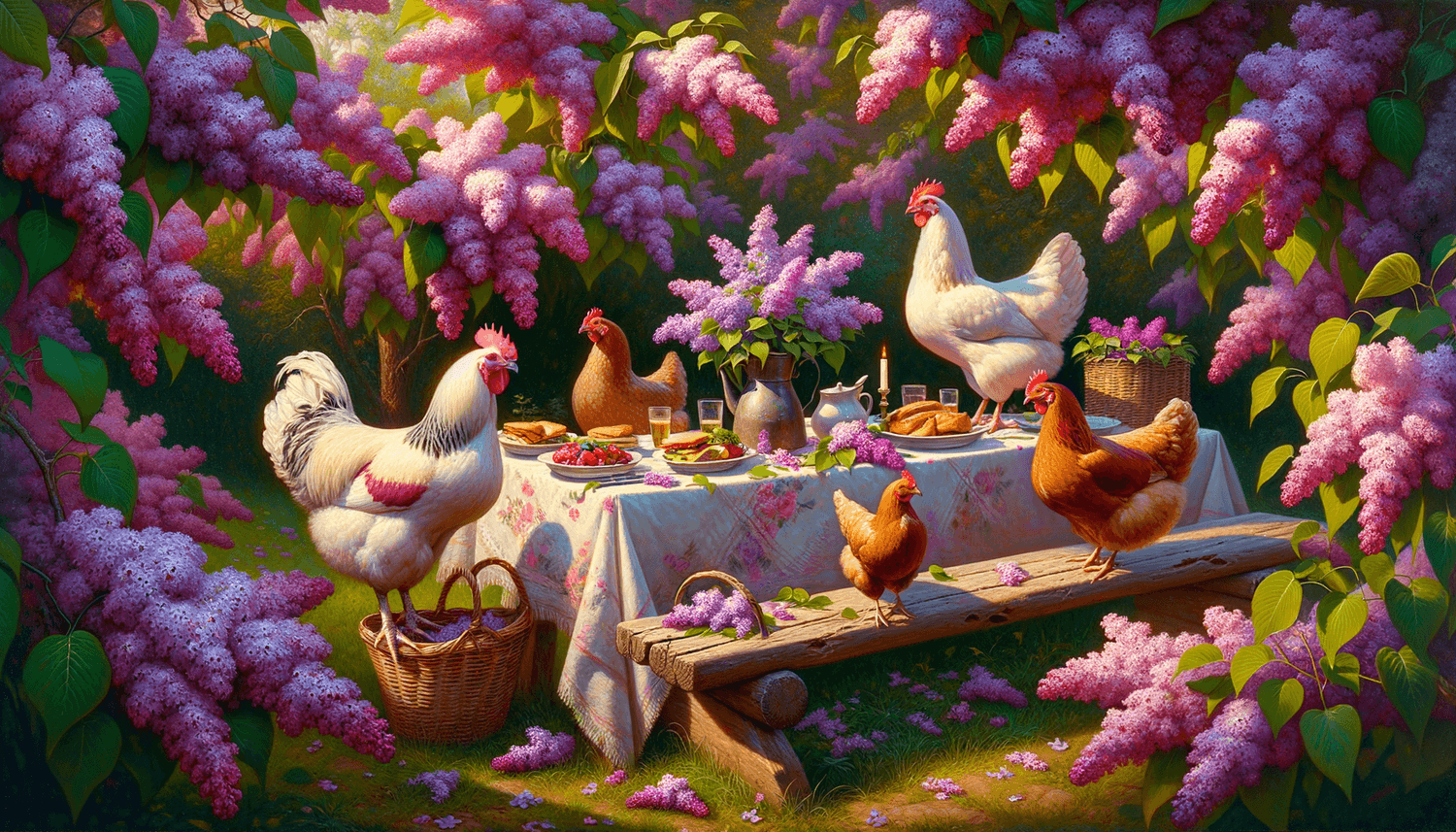Yes, chickens can eat lilacs. These flowers are not toxic to chickens, and they generally do not pose any health risk to the birds when consumed in moderation. However, lilacs do not provide significant nutritional value to chickens, so they should be treated as a rare treat rather than a dietary staple.
Quick Summary
- Chickens can eat lilacs.
- Lilacs are not toxic and are safe in moderation, but they offer limited nutritional value.
- There are no significant benefits or risks associated with feeding lilacs to chickens.
- Feed lilacs sparingly as an occasional treat, not as a significant part of the diet.
Overview of Lilacs
Lilacs are flowering plants known for their fragrant purple blooms, which appear in the spring. They are popular ornamental shrubs in gardens and yards. While lilacs are primarily appreciated for their beauty and scent, they are not typically regarded as a food source for humans or animals and thus have not been analyzed extensively for their nutritional content.
Benefits and Risks of Lilacs for Chickens
Lilacs are considered safe for chickens to consume and are not known to contain any harmful substances. However, as with any non-traditional feed item, there are few established health benefits to feeding lilacs to chickens. The main risk would be feeding them in excessive amounts, which could potentially lead to gastrointestinal upset or the displacement of more nutritionally dense feed.
Feeding Guidelines
Lilacs should be fed to chickens in moderation and only as a small part of a balanced diet. It is recommended to feed only the flower parts and avoid the leaves and stems, as there is less information about their safety. Always introduce any new treat gradually and observe your chickens for any adverse reactions.
Alternatives
If you’re considering feeding lilacs to your chickens primarily as a treat or to add variety to their diet, consider other known safe and more nutritious options like vegetables (e.g., cucumbers, lettuce, or broccoli) and fruits (e.g., apples or berries) that can contribute vitamins and minerals beneficial to poultry health.
Expert Opinions
Poultry nutritionists and veterinarians generally agree that while chickens can safely consume a variety of plants and flowers, including lilacs, they should not comprise a large part of the birds’ diet. Treats should make up no more than 10% of a chicken’s daily intake, with the remainder of the diet being a well-balanced poultry feed that fulfills their nutritional requirements.
Frequently Asked Questions
After learning that chickens can consume lilacs, backyard chicken enthusiasts often have a few more questions about introducing this flower to their flock’s diet. Here are some common inquiries.
How often can I feed my chickens lilacs?
Chickens can have lilacs on an occasional basis. It is best to treat lilacs as a special treat rather than a regular part of their diet.
Are there any parts of the lilac plant that chickens should not eat?
While the flowers are generally safe, it’s best to avoid giving chickens large quantities of lilac leaves or stems as specifics on their safety are less clear. Focus on feeding the flower blooms instead.
What should I do if my chicken eats too many lilacs?
If a chicken consumes too many lilacs, watch for any signs of digestive distress such as a decrease in appetite, lethargy, or abnormal droppings. If such symptoms occur, discontinue feeding lilacs and consult a veterinarian. Always ensure fresh water and a balanced diet for your chickens to help mitigate any issues.

















